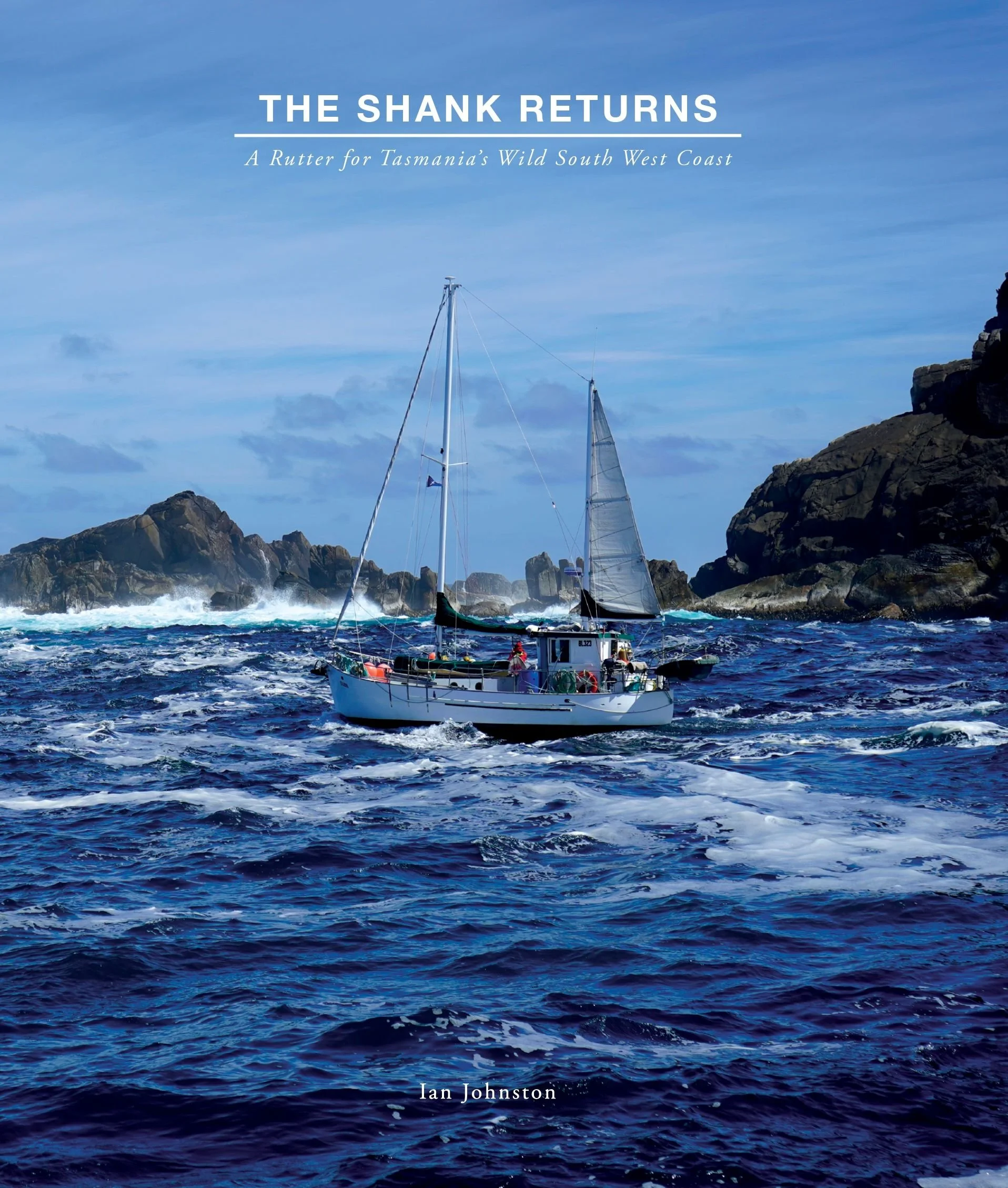Treasured Possessions.
On the eve of the Australian Wooden Boat Festival, one of Tasmania’s greatest advocates, Ian Johnston, shares his thoughts on what makes wooden boats so special. (From “The Shank Returns”)
In today’s world many of us cry out for ways to express our individuality and character. Many of our manufactured possessions are white and precision made from plastic or metal, it is rare for us to give them a name or character.
Some seek out and greatly value handmade, creative, artistic and cultural items. When our treasured possessions are handmade (or at least hand finished) from the finest natural materials, our relationship with them changes.
The Roman elite did not value, or even accept, a new item until it had in effect been run-in for a year. By then it had been given time to be refined and tuned, to work perfectly. Only after items had begun to develop their patina and character did they deserve to be used by the elite.
Handmade wooden boats have a particular allure for some; rarely do new owners change their name because they understand that they are only part of a continuum, a history of owners and adventures.
Locally made boats are created to be suitable for our Tasmanian conditions. They are built by people who put their good names to a craft that, hopefully, will outlive them. Part of the contentment of the builders is that their grandchildren will be able to see and appreciate what they have made.
During the 2007 Australian Wooden Boat Festival I saw a small, stout vessel in Victoria Dock with a “For Sale” sign. She was named Juliene. I admired her lines, her strength, her patina, her history – she exuded a sense of solid, durable, practical efficiency. The sturdy sailing rig made her much more reliable and reduced fuel consumption. With ongoing maintenance and use 100 years of life is possible (for the boat, not me). This was my ticket to adventure.
I was smitten.
She is a well-built craft, made from the finest materials. The design and construction are the result of decades of refinements by many who have passed before and I think, for the purpose I use her for, she is almost perfect.
Although much changed over her 40 years, she maintains her essential character. The massive Blue Gum keel and backbone gives extraordinary strength, durability and constitutes a considerable portion of her ballast.
The planking is King Billy Pine, one of the finest timbers for purpose in the world. She is copper-fastened and powered with a Gardner 5LW motor, arguably one of the best marine diesels ever built.
Because she was built as “just a fishing boat” and is now converted for cruising, the speed of construction required a slightly rough finish in places. But I don’t mind, I don’t want varnish and high gloss, it is not who I am.
And this declaration of love is why I choose to have a wooden boat, despite its challenges. I know that a metal boat can be stronger and can also be fitted out with character and beauty (as can fibreglass). But just at the moment, I am happy with my ticket to our maritime culture.
If you enjoyed Ian’s writing you can see him in Hobart in person this Sunday 12th February as part of The Wood Supply Forum, chaired by AWBF Board member Scott Rankin. They will explore achievable, pragmatic options to ensure a small sustainable supply of boatbuilding timber into the future.
You can also buy a copy of “The Shank Returns” directly from the book’s publisher by visiting Andrew Wilson in the Atrium of the Henry Jones Hotel, in Hobart during the AWBF.



